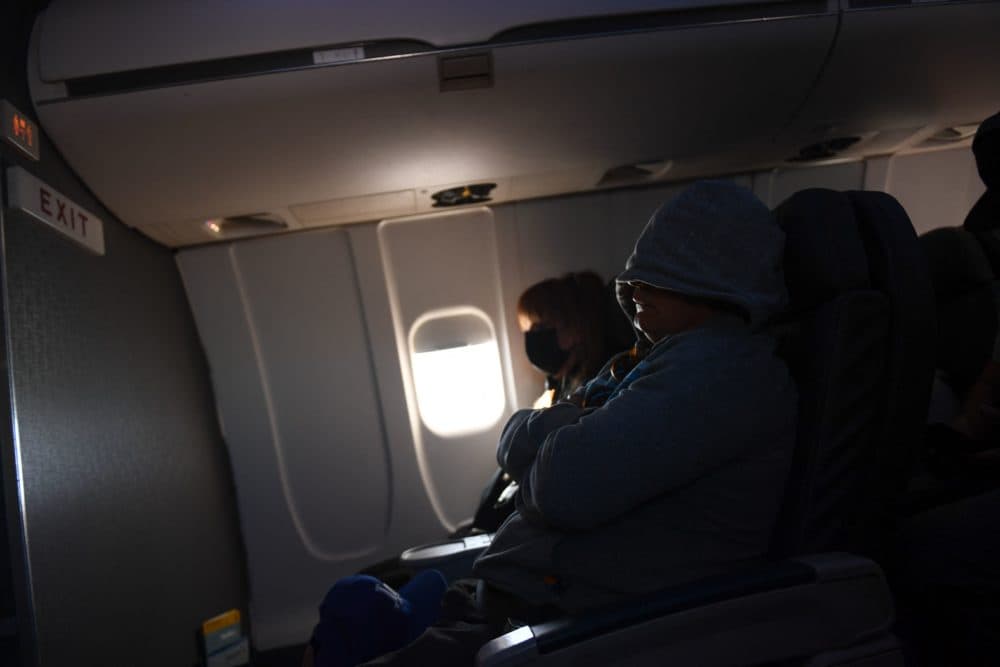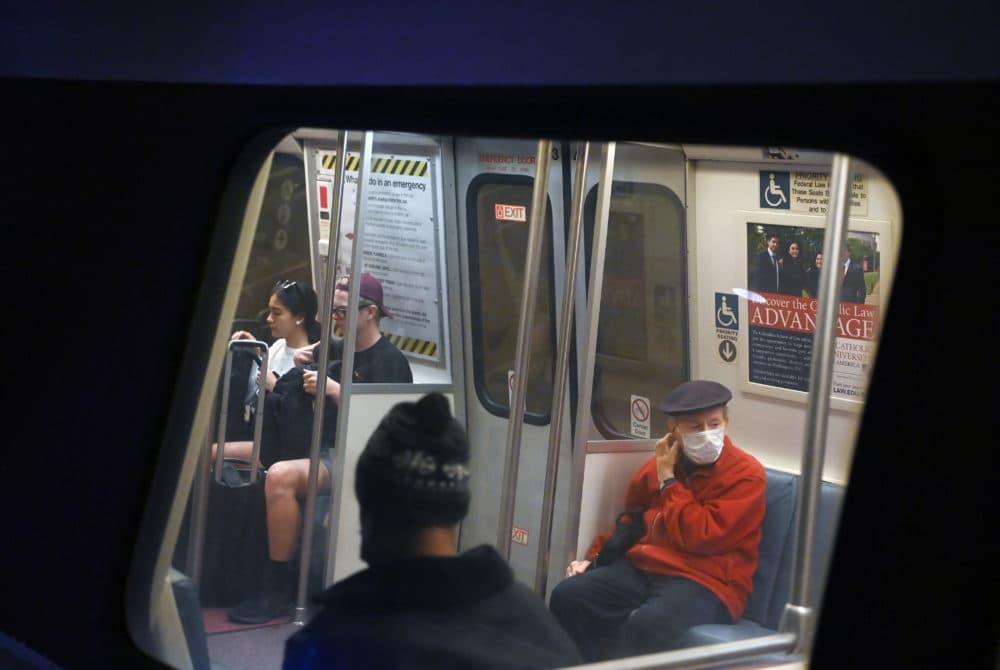Advertisement
Commentary
Masks are no longer mandated, but I hope you'll still wear one to protect people like me

When news broke that a federal judge voided the public transportation mask mandate on Monday, video of airline passengers cheering and crew removing masks mid-flight quickly emerged. Immediately, I thought about what it would be like to receive this news while still on a plane, having boarded with one set of expectations in terms of policy and safety, and having that change with no time to prepare.
There’s a lot to parse about the ruling: its messy, inconsistent implementation; its timing as COVID-19 cases are on the rise again; and longer-term questions about precedent and the role of public health officials versus the courts in determining public health policy. In fact, the Department of Justice has already announced it will appeal Federal Judge Kathryn Kimball Mizelle’s ruling in order to protect public health.
But what this reversal in mask policy also highlights is just how problematic our attitudes towards those most vulnerable to COVID are. An estimated 3% of Americans qualify as moderately to severely immunocompromised and face higher risk of serious illness under CDC guidelines. Millions more live with chronic and disabling conditions outside these narrow CDC guidelines who are also at high risk, even if vaccinated, and there are millions of children under age 5 who are not yet eligible to be vaccinated.
It is one part of a larger tension high-risk patients have seen amplified during COVID: the idea that some lives are simply more dispensable than others.
Wearing masks has been contentious since the beginning of the pandemic, and refusal to comply with mask-wearing on planes and physical attacks against flight crews over mask enforcement have been well-documented. It is one part of a larger tension high-risk patients have seen amplified during COVID: the idea that some lives are simply more dispensable than others.
How many times have we heard talk of COVID mortality rates framed by the fact that many who have died were old or “already sick,” as if that somehow dilutes the statistics? How often have we heard comments that people who are immunocompromised should just stay at home indefinitely? Many don’t have the luxury of remote jobs, and the fact that Monday’s ruling applies to public transportation means that those who rely on buses or subway trains to get to work or to seek medical care now face an even more precarious situation.
Regrettably, the argument that we should withstand minor individual inconvenience for the greater good has not been successful.
In my own life, I have many close relatives, friends, and colleagues who fit in these vulnerable categories, and as a patient with progressive, genetic lung disease, I too am considered high-risk. Like so many, my life has been a series of heightened compromises and limitations since March 2020.
For the first 14 months, I didn’t go into stores, public places, or inside other homes. We joined holidays via Zoom, played board games via FaceTime, and found out who was willing and able to meet us where we were — outdoors in small groups only — and who wasn’t. Even though I am vaccinated and boosted, we still continue to make difficult choices and risk assessments.
Advertisement

I recognize that my privilege has allowed my family to remain COVID-free thus far. Namely, I worked remotely for much of the past two years, as did my spouse, and when I returned to teach a limited number of on-campus classes this fall, I did so with vaccine, booster, mask, and regular PCR testing mandates. Certainly, not everyone is so lucky.
I’ve spent years researching and writing about chronic illness, and a lifetime living with it. A central theme I’ve observed is this: people assume chronic illness is something that will happen to someone else. This makes it easier to dismiss or ignore patients’ lived experiences, but it’s magical thinking. Nearly 133 million people live with at least one chronic ailment, so it’s only a matter of time until illness comes for you or someone you love.
There’s a similar pattern emerging in this pandemic. For example, mitigating the spread of COVID through measures like masking in high-density public places also means mitigating the likelihood of long COVID. Symptoms of this condition are numerous and debilitating, and can affect people even if they’re young and otherwise healthy, and even if they have mild cases of COVID. Some estimates put 10 to 30% of people who contract COVID at risk of suffering from long COVID, and recent analysis suggests that 31 million Americans of working age may experience long COVID symptoms serious enough to keep them out of the workforce. And yet, considerations like that don’t seem to hold much sway.
[The pandemic] isn’t over simply because we want it to be, and if we really want the situation to improve, the needs of the immunocompromised and high-risk patients cannot be an afterthought.
When you live with illness, re-entry, or the return to more “normal” life activities after a hospitalization or illness flare, can be tricky. With COVID, this process is especially fraught, because it’s ongoing and the metrics keep changing. The first time I went inside a store post-vaccination, the first time I saw a colleague in person, or the first day my daughter went back to her elementary school were each momentous in their own right.
I am not sure what the first flight I take will be like, but I will continue to wear a high-quality mask regardless, and I anticipate I may get pushback or judgment along the way for it. I can handle that, and I know that we need strategic off-ramps as we eventually move past this phase of the pandemic. However, it isn’t over simply because we want it to be, and if we really want the situation to improve, the needs of the immunocompromised and high-risk patients cannot be an afterthought.
